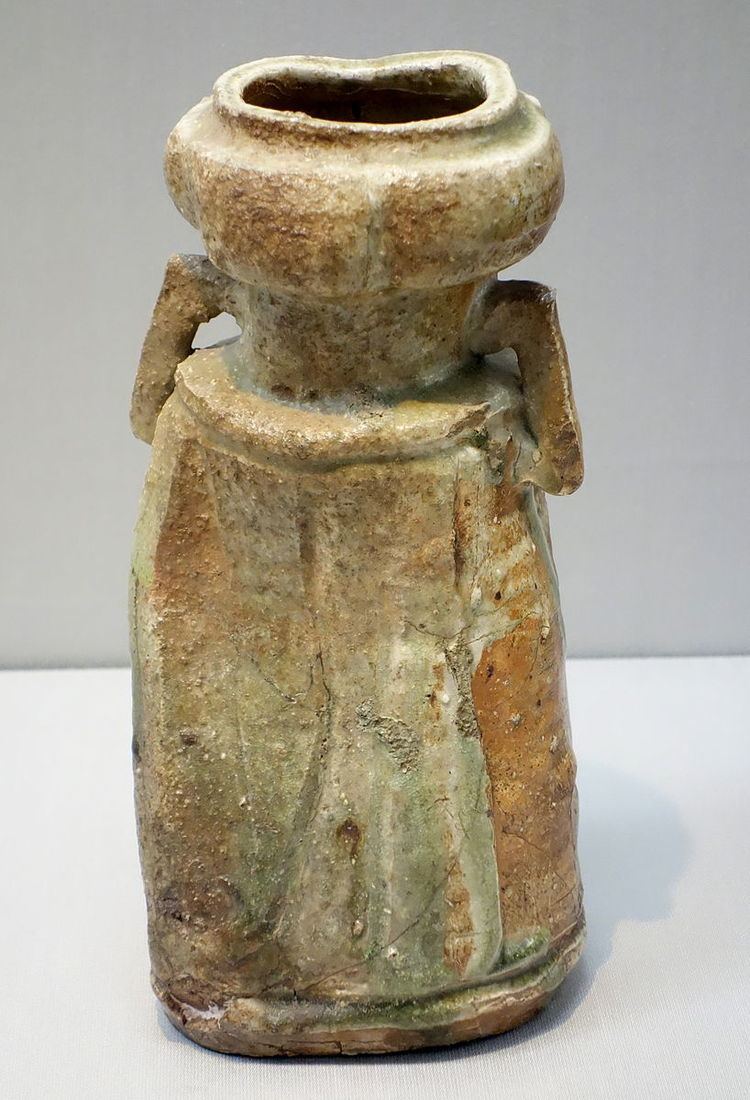 | ||
History
Iga ware's origins are believed to date to the second half of the 7th century and 8th century A.D. It has been a popular pottery style since the Tsutsui-Momoyama period of Japan, when it was used as tea ceremony wares under master Sen no Rikkyu and others. Iga ware uses native Iga clay which is extremely resistant to heat, reacts well to repeated firing, and is fired over three days in a kiln dug into the ground.
Characteristics
The local clay is fired at high temperatures causing it to crystallize in a reddish hue, often with brown-grey burn marks caused by log ashes and a melting effect of its vidro (feldspathic glass).
Iga ware generally reflects Japanese wabi sabi aesthetics with rustic appearance and purposefully deformed shapes, given extra character by the addition of katamimi (ears) handles and intentional gouges and dents. Many pieces are finished with the classic, glass-like bidoro glaze formed by ash.
